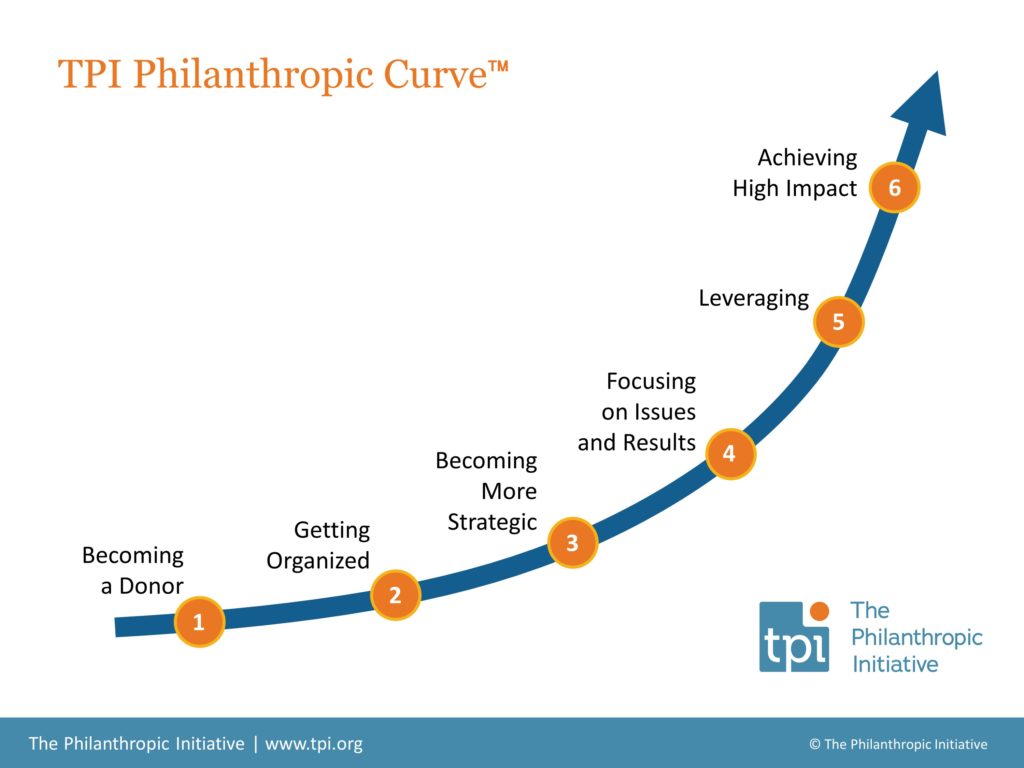
Wealthy families face a constant stream of challenges. From those new to the tactical and often very personal complexities of managing family holdings, to established family structures navigating generational or operational shifts over time, questions can be highly practical to deeply philosophic. What is the role of philanthropy in society? How can one learn and explore ways to achieve more impact? How does wealth influence one’s identity and the values one hopes to pass along to children and grandchildren?
Tackling these and other such questions requires guidance that expertly incorporates each family’s unique situation, needs, and values into strategies and plans. Having been part of many such conversations around philanthropy over the years, I was honored to be asked to contribute a chapter to the Giving Together section of a new book for families and their advisors. Edited by veteran family wealth experts Tom McCullough and Keith Whitaker, Wealth of Wisdom: Top Practices for Wealthy Families and their Advisors compiles insights and tools offered by more than 70 contributors who have put those activities into practice for decades.
The TPI Philanthropic Curve

Given the book’s focus on providing a solid starting point on the myriad conversations possible around family wealth, my own chapter is entitled “Helping Families Move Up the Philanthropic Curve.” The goal of this chapter was to introduce the TPI Philanthropic Curve, developed by TPI’s founder Peter Karoff, and what it means for families beginning their philanthropic journey, as well as what is possible for those hungry to explore ways to increase involvement and impact on issues of concern.
The chapter outlines levels along the Curve, and also introduces readers to the kinds of questions that can help families determine:
- Where they are along the TPI Philanthropic Curve;
- Where they wish to go, and what they wish to achieve, on their philanthropic journey; and
- What could help them progress along the Curve towards increased philanthropic impact.
The Benefits of a Centralized Resource as a Starting Point
In our work with families and other donors, TPI often works in partnership with wealth advisors, family trust managers, financial planners, accountants, attorneys, and other professionals. The many elements of financial management, goals for growing and using wealth, and doing so while strengthening family bonds overlap and interconnect in so many ways for families of wealth and those who advise them.
Wealth of Wisdom: Top Practices for Wealthy Families and Their Advisors helps families and those advising them to take a comprehensive look at the multitude of issues that can arise, and offers tools, insights, and guidance. Sections within the book tackle:
- Thinking Through What Matters Most
- Becoming a Learning Family
- Planning Thoughtfully
- Investing Wisely
- Seeking Sound Advice
- Raising the Rising Generation
- Navigating Family Dynamics
- Making Shared Decisions
- and, of course, Giving Together.
I hope this quick look at the TPI Philanthropic Curve, and the broader set of issues that can face families, helps to elevate thinking about the possibilities for growth, change, and deep engagement with the world.
Note: If you would like to purchase Wealth of Wisdom: Top Practices for Wealthy Families and Their Advisors, or its 2018 predecessor from the same editors, Wealth of Wisdom: Top 50 Questions Wealthy Families Ask, they are available at Amazon, Barnes and Noble, and through independent bookstores.


